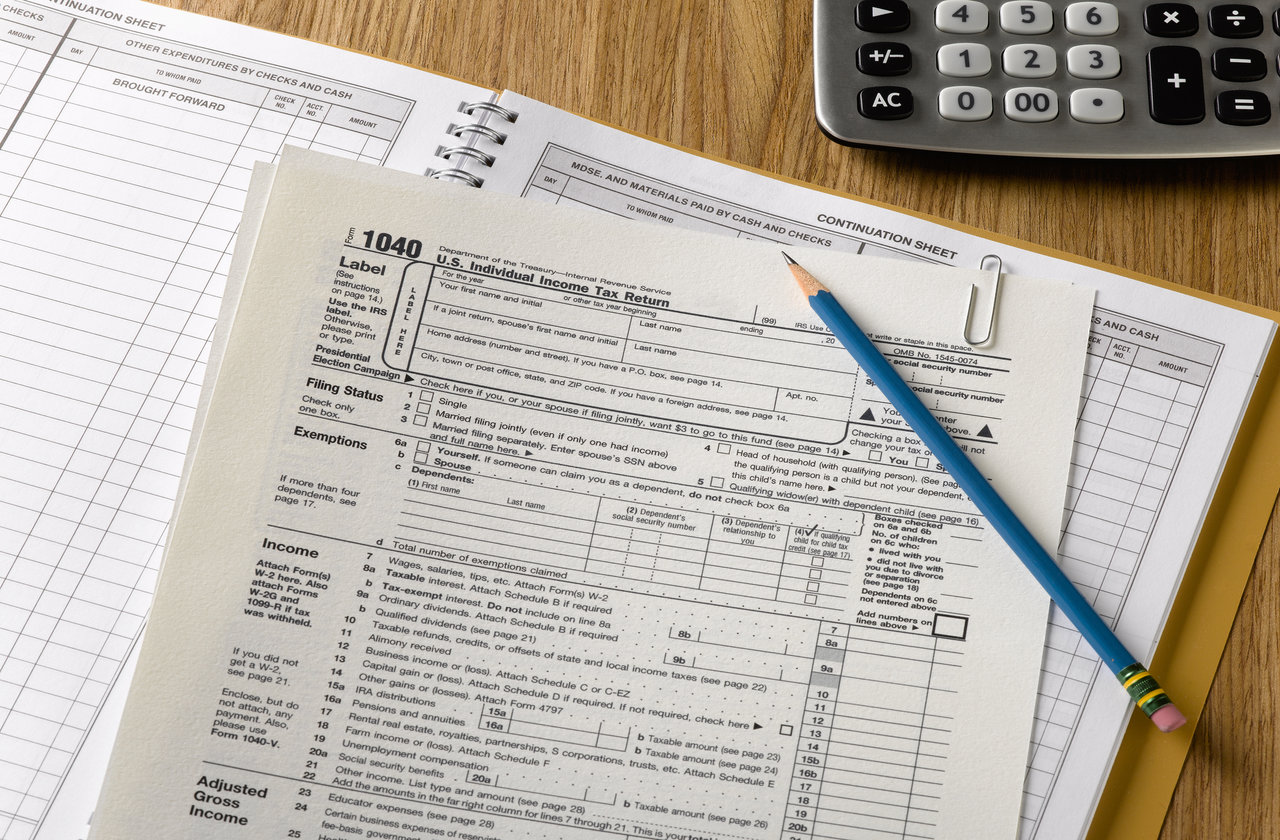Keep More of Your Retirement Savings with Tax-Bracket Planning
Without a comprehensive tax strategy in place, many retirees may pay three times more in taxes than they need to. Avoid that by “filling” your tax bracket. Here’s how.


If you’re like most people planning for retirement, your focus for years has been on growing your nest egg — accumulating as much as you can so you can live comfortably and without worry.
But if that’s as far it goes, your plan is flawed. Because it isn’t just about how much money you have saved for retirement, it’s also how much you get to keep after taxes. To optimize your savings, it’s important to build a tax-efficient portfolio with:
- Tax-efficient investments — investments that offer the lowest tax burdens relative to their interest or dividend income;
- Tax-efficient withdrawal strategies — differently taxed accounts you can pull from that offer flexibility for income purposes; and
- Tax-efficient planning— adopting a long-term tax plan, the focus of which is to lower taxes over your entire retirement, not in any given year.
Don’t Pay 3 Times Too Much in Taxes
It’s not that people aren’t worried about taxes. I hear from clients and prospective clients all the time who believe higher taxes are inevitable, and their taxes will continue to go up in retirement. In my opinion, most retirees should only be required to pay an average federal income tax rate of 8% to 10%. However, taxpayers who fail to effectively plan for distributions from IRAs or other qualified plan distributions could easily pay three times this tax rate on their investment earnings.
From just $107.88 $24.99 for Kiplinger Personal Finance
Become a smarter, better informed investor. Subscribe from just $107.88 $24.99, plus get up to 4 Special Issues

Sign up for Kiplinger’s Free Newsletters
Profit and prosper with the best of expert advice on investing, taxes, retirement, personal finance and more - straight to your e-mail.
Profit and prosper with the best of expert advice - straight to your e-mail.
But that doesn’t have to happen. When you stop working, you have some control over how much income you pay yourself — and because your spending needs may be less, you can likely keep that amount low. You just have to manage your income sources effectively to get the most tax efficiency over your lifetime.
Take Control of Your Tax Bracket
The key is “tax-bracket control,” which, for most retirees, means staying within the 15% tax bracket for the rest of their lives. Of course, effective tax planning must start with your first year of retirement, so don’t immediately assume your tax plan is perfect if you fail to “fill” the entire 15% tax bracket in your early retirement years.
Let me elaborate. For 2019, the 12% bracket tops out at $78,950 in taxable income for joint filers. But you get to add your standard deduction to that ($24,400 for those under 65; for those 65 and up it’s a little more). Add all that up and you’re right around $103,350.
The goal is to “fill” every retirement year with taxable income up to the $103,350 mark (for joint filers) even if you do not need that “income.” The retiree has now converted qualified money, or pre-tax dollars, into nonqualified money, or savings accounts for which taxes have been paid. Further, the retiree has done this at a very low tax rate. Finally, the growth associated with these accounts will no longer be taxed. Let me give you an example.
An Example to Show How Filling the Bracket Works
Let’s say you retire at 60. You have no Social Security income yet and only a small pension, so your taxable income is just $20,000 or $30,000. You still can take that 15% tax bracket to the limit, and you should consider doing so — perhaps by using a Roth conversion strategy and distributing pre-tax dollars set aside in a traditional IRA or 401(k) directly to a Roth IRA account. You’ll fill the bracket with taxable income from the distribution, the assets in the Roth IRA can grow tax-free, and you’ve just minimized the chances that an excessive required minimum distribution will push you out of that 15% bracket in the future.
What happens if you need more than $103,350 of income?
- That universal life insurance policy you own? You can withdraw cash on a tax-free basis in the form of loans, though doing so will reduce the policy value.
- The equity in your home? You can take out a home equity line of credit, or HELOC, and the interest is tax deductible.
- Your Social Security? You probably think your filing strategy is all about maximizing your income — but deferring your benefits also can serve as a component of a greater tax strategy.
Now, remember what I wrote about people telling me all the time that they’re worried about their taxes going up? Guess how many prospective clients come into my office with a tax-efficient retirement plan? I’m a financial adviser for the wealthy specializing in retirement income, and I would say fewer than 2%.
Make Sure Your Adviser Has Tax-Planning Skills
And it’s no wonder. Being tax-efficient is a skill that needs to be continually monitored and adjusted so it can be maximized annually. Unless you’re studying the tax code and doing this on a daily basis for multiple people, it can be complicated stuff. So financial professionals need to increase their own tax knowledge before they can bring it to their clients.
If you’re currently looking for an adviser, ask about their experience working with taxes during your interviews. If you have an adviser you like and trust, ask what he or she is doing to build tax efficiency into your portfolio, or if there’s a tax professional on the team.
Either way, make tax planning a priority so you can keep more of that nest egg you’ve worked so hard to grow.
Kim Franke-Folstad contributed to this article.
Investment advisory services are offered through Calibre Investment Management, LLC, a Registered Investment Adviser. For a list of full disclosures, please click here and scroll to the bottom of the page.
Profit and prosper with the best of Kiplinger's advice on investing, taxes, retirement, personal finance and much more. Delivered daily. Enter your email in the box and click Sign Me Up.

Pete Lang is an Investment Adviser Representative and president of Lang Capital, with offices in Hilton Head and Charlotte, N.C. Now retired from the public practice of law and accounting after 20 years, Pete specializes in assisting his clients with investment, retirement and tax-planning strategies.. His background makes him uniquely qualified to handle the most complex retirement, tax and estate plans.
-
 How to Avoid the Financial Quicksand of Early Retirement Losses
How to Avoid the Financial Quicksand of Early Retirement LossesSequence of returns — experiencing losses early on — can quickly deplete your savings, highlighting the need for strategies that prioritize income stability.
-
 How an Elder Law Attorney Can Help Protect Your Aging Parents
How an Elder Law Attorney Can Help Protect Your Aging ParentsIf you are worried about older family members or friends whose financial judgment is raising red flags, help is out there — from an elder law attorney.
-
 Q4 Post-Mortem From an Investment Adviser: Year of Resilience
Q4 Post-Mortem From an Investment Adviser: Year of ResilienceFinancial pro Prem Patel shares his take on how markets performed in the fourth quarter of 2025, with an eye toward what investors should keep in mind for 2026.
-
 This Is How Early Retirement Losses Can Dump You Into Financial Quicksand (Plus, Tips to Stay on Solid Ground)
This Is How Early Retirement Losses Can Dump You Into Financial Quicksand (Plus, Tips to Stay on Solid Ground)Sequence of returns — experiencing losses early on — can quickly deplete your savings, highlighting the need for strategies that prioritize income stability.
-
 How an Elder Law Attorney Can Help Protect Your Aging Parents From Financial Mistakes
How an Elder Law Attorney Can Help Protect Your Aging Parents From Financial MistakesIf you are worried about older family members or friends whose financial judgment is raising red flags, help is out there — from an elder law attorney.
-
 Q4 2025 Post-Mortem From an Investment Adviser: A Year of Resilience as Gold Shines and the U.S. Dollar Dives
Q4 2025 Post-Mortem From an Investment Adviser: A Year of Resilience as Gold Shines and the U.S. Dollar DivesFinancial pro Prem Patel shares his take on how markets performed in the fourth quarter of 2025, with an eye toward what investors should keep in mind for 2026.
-
 Is Your Emergency Fund Running Low? Here's How to Bulk It Back Up
Is Your Emergency Fund Running Low? Here's How to Bulk It Back UpIf you're struggling right now, you're not alone. Here's how you can identify financial issues, implement a budget and prioritize rebuilding your emergency fund.
-
 An Expert Guide to How All-Assets Planning Offers a Better Retirement
An Expert Guide to How All-Assets Planning Offers a Better RetirementAn "all-asset" strategy would integrate housing wealth and annuities with traditional investments to generate more income and liquid savings for retirees.
-
 7 Tax Blunders to Avoid in Your First Year of Retirement, From a Seasoned Financial Planner
7 Tax Blunders to Avoid in Your First Year of Retirement, From a Seasoned Financial PlannerA business-as-usual approach to taxes in the first year of retirement can lead to silly trip-ups that erode your nest egg. Here are seven common goofs to avoid.
-
 How to Plan for Social Security in 2026's Changing Landscape, From a Financial Professional
How to Plan for Social Security in 2026's Changing Landscape, From a Financial ProfessionalNot understanding how the upcoming changes in 2026 might affect you could put your financial security in retirement at risk. This is what you need to know.
-
 6 Overlooked Areas That Can Make or Break Your Retirement, From a Retirement Adviser
6 Overlooked Areas That Can Make or Break Your Retirement, From a Retirement AdviserIf you're heading into retirement with scattered and uncertain plans, distilling them into these six areas can ensure you thrive in later life.